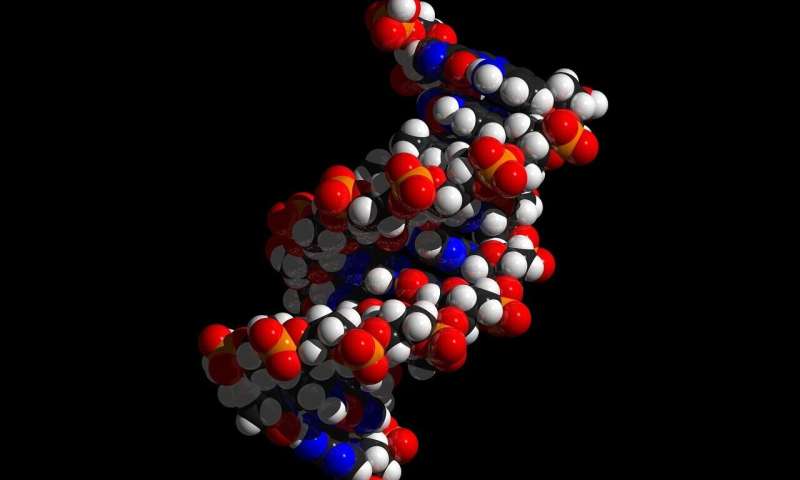DNA test can quickly identify pneumonia in patients with severe COVID-19, aiding faster treatment

Researchers have developed a DNA test to quickly identify secondary infections in COVID-19 patients, who have double the risk of developing pneumonia while on ventilation than non-COVID-19 patients.
For patients with the most severe forms of COVID-19, mechanical ventilation is often the only way to keep them alive, as doctors use anti-inflammatory therapies to treat their inflamed lungs. However, these patients are susceptible to further infections from bacteria and fungi that they may acquire while in hospital—so called ‘ventilator-associated pneumonia’.
Now, a team of scientists and doctors at the University of Cambridge and Cambridge University Hospitals NHS Foundation Trust, led by Professor Gordon Dougan, Dr. Vilas Navapurkar and Dr. Andrew Conway Morris, have developed a simple DNA test to quickly identify these infections and target antibiotic treatment as needed.
The test, developed at Addenbrooke’s hospital in collaboration with Public Health England, gives doctors the information they need to start treatment within hours rather than days, fine-tuning treatment as required and reducing the inappropriate use of antibiotics. This approach, based on higher throughput DNA testing, is being rolled out at Cambridge University Hospitals and offers a route towards better treatments for infection more generally. The results are reported in the journal Critical Care.
Patients who need mechanical ventilation are at significant risk of developing secondary pneumonia while they are in intensive care. These infections are often caused by antibiotic-resistant bacteria, and are hard to diagnose and need targeted treatment.
“Early on in the pandemic we noticed that COVID-19 patients appeared to be particularly at risk of developing secondary pneumonia, and started using a rapid diagnostic test that we had developed for just such a situation,” said co-author Dr. Andrew Conway Morris from Cambridge’s Department of Medicine and an intensive care consultant. “Using this test, we found that patients with COVID-19 were twice as likely to develop secondary pneumonia as other patients in the same intensive care unit.”
COVID-19 patients are thought to be at increased risk of infection for several reasons. Due to the amount of lung damage, these severe COVID-19 cases tend to spend more time on a ventilator than patients without COVID-19. In addition, many of these patients also have a poorly-regulated immune system, where the immune cells damage the organs, but also have impaired anti-microbial functions, increasing the risk of infection.
Normally, confirming a pneumonia diagnosis is challenging, as bacterial samples from patients need to be cultured and grown in a lab, which is time-consuming. The Cambridge test takes an alternative approach by detecting the DNA of different pathogens, which allows for faster and more accurate testing.
The test uses multiple polymerase chain reaction (PCR) which detects the DNA of the bacteria and can be done in around four hours, meaning there is no need to wait for the bacteria to grow. “Often, patients have already started to receive antobiotics before the bacteria have had time to grow in the lab,” said Morris. “This means that results from cultures are often negative, whereas PCR doesn’t need viable bacteria to detect—making this a more accurate test.”
The test—which was developed with Dr. Martin Curran, a specialist in PCR diagnostics from Public Health England’s Cambridge laboratory—runs multiple PCR reactions in parallel, and can simultaneously pick up 52 different pathogens, which often infect the lungs of patients in intensive care. At the same time, it can also test for antibiotic resistance.
“We found that although patients with COVID-19 were more likely to develop secondary pneumonia, the bacteria that caused these infections were similar to those in ICU patients without COVID-19,” said lead author Mailis Maes, also from the Department of Medicine. “This means that standard antibiotic protocols can be applied to COVID-19 patients.”
Source: Read Full Article



